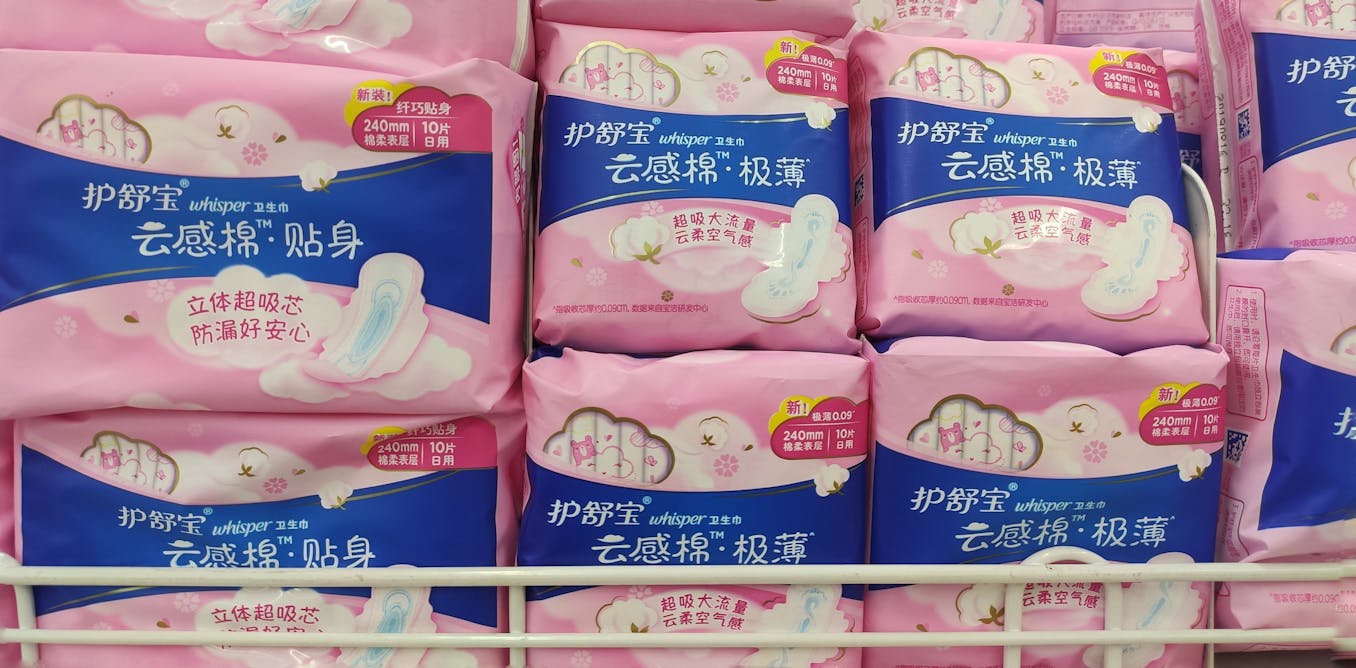China
China’s geostrategic engagement in a new Afghanistan

Author: BM Jain, Indian Journal of Asian Affairs
China is determined to establish a geostrategic foothold in the new Taliban-led Afghanistan. A decade ago, China forayed into Afghanistan’s strategic space by inking deals with the Afghan government in the mining, power and oilfields sectors — although Afghanistan’s chaotic political environment prevented any real progress. China then played a key role in facilitating peace talks with the Taliban from 2014. With the Taliban back in power, China can once again advance its interests.
The new Taliban regime has termed China its ‘most important partner’ and a ‘dependable friend’ for aid, investments and infrastructure projects. These depictions are significant because the Taliban does not expect to receive foreign aid from other sources, such as the World Bank or the IMF, to stave off an economic catastrophe. Part of what attracts the Taliban to China is its massive financial resources, evidenced by its US$1 trillion investment in its Belt and Road Initiative (BRI).
More importantly, the Taliban is being treated as a pariah by the international community at large. As such, it looks to China as a pillar of financial and diplomatic support at the United Nations. Notably, Chinese Foreign Minister Wang Yi’s address to the 2021 G20 foreign ministers’ meeting called for the lifting of unilateral sanctions against Afghanistan.
What drives China to solidify its ties with the Taliban government? Geopolitically, China is in a much better position today to play the role of a game-changer, with the decline of US power and its chaotic exit from Afghanistan. China is now emboldened to fill the power vacuum to serve its myriad strategic interests.
Beijing’s fundamental concern is about radicalisation spilling over into China. It is seriously engaged in negotiating with the interim Taliban government for a blanket guarantee that it will not export extremist forces to support Uyghur separatists in Xinjiang. Regardless of the magnitude of the threat, Beijing’s main concern is adopting all possible preventive measures to ensure internal security and stability.
China’s eyes are also cast on Afghanistan’s rare-earth metals, which are estimated at between US$1–3 trillion in value. These metals are used in rechargeable batteries for electric cars, computers, televisions, fibre optics and lasers. China’s direct investment in Afghanistan has spiked by nearly 12 per cent in 2020, apart from its investments in Afghanistan’s Mes Aynak copper mine project in 2008 and the Amu Darya oil exploration in 2011.
China also needs the Taliban’s full support for the successful completion of its BRI — and the Taliban is rolling out the red carpet. Taliban spokesperson Zabiullah Mujahid reportedly clarified that his government is willing to join the BRI’s China–Pakistan Economic Corridor.
Another Chinese objective is to scupper even the minimal strategic presence of India under the new government. To this end China is engaging Pakistan, which has no qualms about joining hands with its ‘all-weather friend’.
Overall, China seeks to play a proactive role diplomatically and politically to help bring stability and peaceful conditions to Afghanistan. This would help it advance its projects and play an influential role in articulating and contouring governance structures in Afghanistan.
The question is, how?
China will employ mixed tools of diplomacy characterised by patience, caution and long-term strategic planning to exercise its leverage. Still, no definite timeline for this can be predicted in the complex web of international politics.
So far as India’s role in a new Afghanistan is concerned, its strategic gurus appear to be clueless. There is no blueprint or integrated roadmap to deal with the China–Pakistan challenge to India’s strategic investments in Afghanistan. India is now sidelined on the emerging future of Afghanistan, affecting its free access to Central Asia through the Afghan corridor and obstructing its operations in Iran’s Chabahar port adjacent to the Afghan border. While India was not invited to the 2016 multiparty talks hosted by Moscow, China emerged as a key player to reshape Afghanistan’s future course.
Other stakeholders, including Iran and Russia, are equally interested in playing a role in determining Afghanistan’s strategic landscape. China will need to play its cards with caution and restraint to manage and sustain its friendly ties with both Moscow and Tehran without undermining its key interests.
It is in China’s…
Business
China Dismantles Prominent Uyghur Business Landmark in Xinjiang – Shia Waves

The Chinese government demolished the Rebiya Kadeer Trade Center in Xinjiang, affecting Uyghur culture and commerce, prompting criticism from activists amid concerns over cultural erasure and human rights violations.
Demolition of a Cultural Landmark
The Chinese government recently demolished the Rebiya Kadeer Trade Center in Urumqi, Xinjiang, a vital hub for Uyghur culture and commerce, as reported by VOA. This center, once inhabited by more than 800 predominantly Uyghur-owned businesses, has been deserted since 2009. Authorities forcibly ordered local business owners to vacate the premises before proceeding with the demolition, which took place without any public notice.
Condemnation from Activists
Uyghur rights activists have condemned this demolition, perceiving it as part of China’s broader strategy to undermine Uyghur identity and heritage. The event has sparked heightened international concern regarding China’s policies in Xinjiang, which have been characterized by allegations of mass detentions and cultural suppression, prompting claims of crimes against humanity.
Rebiya Kadeer’s Response
Rebiya Kadeer, the center’s namesake and a notable Uyghur rights advocate, criticized the demolition as a deliberate attempt to erase her legacy. Kadeer, who has been living in exile in the U.S. since her release from imprisonment in 2005, continues to advocate for Uyghur rights. She has expressed that her family members have suffered persecution due to her activism, while the Chinese government has yet to comment on the legal ramifications of the demolition.
Source : China Demolishes Uyghur Business Landmark in Xinjiang – Shia Waves
China
China Expands Nationwide Private Pension Scheme After Two-Year Pilot Program

China’s private pension scheme, previously piloted in 36 cities, will roll out nationwide on December 15, 2024, enabling workers to open tax-deferred accounts. The initiative aims to enhance retirement savings, address aging population challenges, and stimulate financial sector growth.
After a two-year pilot program, China has officially expanded its private pension scheme nationwide. Starting December 15, 2024, workers covered by urban employee basic pension insurance or urban-rural resident basic pension insurance across the country can participate in this supplementary pension scheme. This nationwide rollout represents a significant milestone in China’s efforts to build a comprehensive pension system, addressing the challenges of a rapidly aging population.
On December 12, 2024, the Ministry of Human Resources and Social Security, together with four other departments including the Ministry of Finance, the State Taxation Administration, the Financial Regulatory Administration, and the China Securities Regulatory Commission, announced the nationwide implementation of China’s private pension scheme effective December 15, 2024. The initiative extends eligibility to all workers enrolled in urban employee basic pension insurance or urban-rural resident basic pension insurance.
A notable development is the expansion of tax incentives for private pensions, previously limited to pilot cities, to a national scale. Participants can now enjoy these benefits across China, with government agencies collaborating to ensure seamless implementation and to encourage broad participation through these enhanced incentives.
China first introduced its private pension scheme in November 2022 as a pilot program covering 36 cities and regions, including major hubs like Beijing, Shanghai, Guangzhou, Xi’an, and Chengdu. Under the program, individuals were allowed to open tax-deferred private pension accounts, contributing up to RMB 12,000 (approximately $1,654) annually to invest in a range of retirement products such as bank deposits, mutual funds, commercial pension insurance, and wealth management products.
Read more about China’s private pension pilot program launched two years ago: China Officially Launches New Private Pension Scheme – Who Can Take Part?
The nationwide implementation underscores the Chinese government’s commitment to addressing demographic challenges and promoting economic resilience. By providing tax advantages and expanding access, the scheme aims to incentivize long-term savings and foster greater participation in personal retirement planning.
The reform is expected to catalyze growth in China’s financial and insurance sectors while offering individuals a reliable mechanism to enhance their retirement security.
| This article was first published by China Briefing , which is produced by Dezan Shira & Associates. The firm assists foreign investors throughout Asia from offices across the world, including in in China, Hong Kong, Vietnam, Singapore, and India . Readers may write to info@dezshira.com for more support. |
Read the rest of the original article.
China
How a scandal over sanitary pads is shaping feminist activism in China

Chinese sanitary pad brands face scandal over misleading product quality and pH levels. Consumer outrage grows amid larger issues of women’s health neglect and activism for better standards linked to declining fertility rates.
A string of prominent sanitary pad brands in China have become embroiled in a scandal about the quality of their products. The controversy began in early November when consumers complained that that the advertised lengths of many sanitary pads were misleading.
Then, a few days later, customers discovered that many pads had pH levels similar to textiles such as curtains and tablecloths that do not come into frequent contact with skin, potentially causing irritation or harm to users.
The anger only intensified when ABC, one of the companies at the centre of the controversy, responded dismissively to concerned consumers. ABC emphasised that it was complying with national standards, and reportedly replied to a complaint with: “If you cannot accept it, then you can choose not to buy it”.
Chinese companies have since apologised for their sub-par products, and ABC has even said that it was “deeply sorry” for its “inappropriate” response. But for many women in China, this scandal is about more than just defective products. It is part of a troubling pattern in which women’s health and dignity is blatantly disregarded.
In 2022, Chinese women took to social media to advocate for sanitary pads to be sold on trains. Their demands were swiftly dismissed, with China Railway saying sanitary pads were “private items” that women should prepare for themselves in advance.
Some people on the internet echoed this sentiment, arguing that it was inappropriate and unhygienic to sell sanitary pads on trains. “You don’t want sanitary pads sold alongside food, do you?”, one wrote.
Remarks like this laid bare not only the stigma surrounding menstrual blood in China, where it is seen as polluting and shameful, but also the widespread ignorance among men about menstruation. This was again highlighted by one social media user who questioned absurdly: “Why can’t women just hold it in?” The recent scandal over poor quality sanitary pads is yet another chapter in this story.
The neglect of women’s basic needs in China has worsened with the government’s push for higher birth rates. China’s ruling Communist party began actively promoting higher birth rates in the mid-2010s after decades of limiting most families to one child. The push is driven primarily by the state’s concerns over an ageing population and a shrinking labour force.
This pro-natalist agenda, which has been bolstered by media campaigns urging women to prioritise marriage and motherhood, has pressured many to sacrifice their education and careers. In anticipation of having to provide paid maternity leave, employers also often discriminate in the processes of hiring and promotions.
Meanwhile, feminist advocacy faces censorship and suppression. This has included the shutdown of influential media platforms like Feminist Voices and the blocking of #MeToo-related hashtags. Activists have resorted to creative methods, such as using symbols like the “Rice Bunny” (a term that is pronounced “mi tu” in Chinese) emoji, to navigate strict surveillance and content filtering that targets discussions on gender equality.
Why the #RiceBunny hashtag has become China’s #MeToo.
Fighting for change
Women in China are now rallying for higher standards in the production and regulation of sanitary products. They are actively submitting comments via the government’s online platform for the public to provide feedback to standard setting officials.
On November 22, a representative from the organisation responsible for drafting the new standards stated that public feedback had been heard and will be considered in the process. However, this response is far from satisfactory. The same companies that produce sanitary pads in China are heavily involved in setting these standards.
Women’s active involvement in shaping the revision of national standards is reflective of a consistent strategy in which they use government-provided channels for political participation. Yet women in China have now also started to link the issue of low-quality sanitary products to broader societal challenges, including falling fertility rates.
In the 1970s, when China first implemented its one-child policy, over six children were born for every woman of childbearing age. This had dropped to an average of one-and-a-half by the 2000s. At the same time, there is a growing prevalence of infertility in China. A 2021 study published in The Lancet, a peer-reviewed medical journal, shows that China’s infertility rate rose from 12% in 2007 to 18% in 2020. One in every 5.6 Chinese couples of childbearing age faces challenges in conceiving a baby.
Throughout the recent sanitary pad scandal, hashtags such as #LowQualitySanitaryPadsCauseFemaleIntertility have spread across Chinese social media platforms such as Weibo. By aligning their grievances with national anxieties, feminist activists in China are strategically reframing their demands to align with state priorities.
Such an approach may, on the one hand, risk unintentionally reinforcing existing stereotypes about women and societal expectations. But it may also increase the likelihood of their concerns being addressed, as it presents better sanitary product standards as a critical public health and national concern rather than a “women’s issue” that can simply be dismissed.
Feminist activism in China looks to be growing in maturity. Narratives and strategies are now being carefully crafted to ensure maximum impact both in public and policy arenas.
This article is republished from The Conversation under a Creative Commons license. Read the original article.






